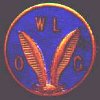 Go
to the Archive index
Go
to the Archive indexThe best way to start will be to define what an autocycle is ...
In the pioneering days of motor cycling the term “autocycle” meant any powered two-wheeler and was, therefore, synonymous with motor cycle. This early usage is perpetuated today in the name of the Auto Cycle Union, which is the governing body of motor cycle sport in the UK.
Between the two World Wars a utilitarian style of motorcycle with pedals and a small engine, of between 75cc and 100cc capacity, was developed and this the type of machine these articles will consider. The term autocycle has also been applied to other types of machine at various times. Bicycles powered by auxiliary engines became popular After World War II; these were initially classified as autocycles until the term “cyclemotor” was applied to them. Later, purpose built under-50cc machines were described as “light autocycles” until the word “moped” was imported from Germany in the mid 1950s. Neither of these types is now thought of as being an autocycle. Finally, the VéloSoleX must be mentioned: this machine is to all intents and purposes a cyclemotor but it has frequently been classified as an autocycle because it was only sold as a complete machine; the engine could not be “clipped-on” to any bicycle. Perhaps, in reality, it should be in a class by itself.
To summarise, what these articles are about is the “British-style” autocycles that began with the Cyc-Auto in 1934 and died out with the New Hudson in 1958; typified by the many marques that used the Villiers Junior, Junior Deluxe and 2F engines as their power plant.
The story of the autocycle begins with the Budget of 1931 when a reduced annual tax rate of 15/- [75p] was introduced for motor cycles with engine capacities under 150cc. Machines of the autocycle type were already popular on the European Continent and the aim of this concession was to stimulate the British industry to produce something similar. At first manufacturers only took advantage of this new taxation class by producing small capacity motor cycles, or “pip-squeaks” as they became nicknamed. When autocycles did appear it was, therefore, inevitable that the nickname “Wilfred” would be given to them, derived from the title of the popular Daily Mirror cartoon strip “Pip, Squeak and Wilfred”.

Wilfred’s ears: the badge of the Wilfredian League of
Gugnuncs.
The first real autocycle didn’t came onto the scene until 1934, this was the Cyc-Auto.
The Cyc-Auto was a somewhat peculiar design and never achieved great popularity; it remained the sole example of an autocycle on the British market until Excelsior and Raynal both introduced their Villiers Junior powered autocycles in 1937. The next step forward from the Cyc-Auto came in 1936. This was a one-off prototype designed by George H Jones in conjunction with the Villiers Engine Company. In many ways it was similar to the Cyc-Auto: the frame was similarly proportioned and it used concentric shafts for the pedals and power drive. The design was taken up by Raynal but modified to make the machine cheaper to produce. The re-design altered the proportions of the machine, apparently much to Mr Jones’s annoyance, to what was to become a de facto standard for Villiers Junior equipped machines. It has been said that the Villiers Junior was designed specifically for the Raynal but Villiers, apprehensive that the Raynal would not achieve a high volume of sales, ‘leaked’ the design details to Excelsior to ensure a larger market for their new engine.
Following the introduction of these two machines, production of autocycles blossomed with James, Rudge, Coventry-Eagle, Francis-Barnett, Norman, Three Spires, Dayton, Sun and New Hudson all producing similar, Junior-powered autocycles.
Production of these marques continued to 1940, when most factories turned to doing war work, to be resumed after the war. However, a few manufacturers continued in production. The autocycle was one of the few types of motor cycle that continued in production during World War II. This is because autocycles were found to be extremely useful during the war, providing transport for those engaged in essential services: district nurses, ARP wardens, armament workers, etc.
The main impact of the autocycle was that it brought motorised transport to people who could not afford to run a car and who would never have considered riding a ‘proper’ motor cycle. Women in particular enjoyed the freedom of having their own transport which the autocycle gave them and which would not have been available to them otherwise.
We will continue this series with a look at all the individual makes of autocycle, beginning with the Aberdale.
First published - January 1998